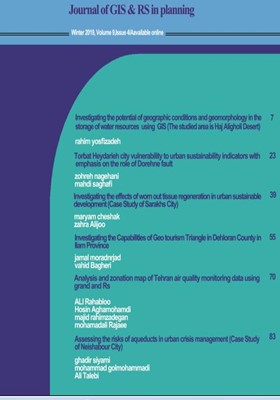Investigating the effects of worn out tissue regeneration in urban sustainable development (Case Study of Sarakhs City)
Subject Areas :maryam cheshak 1 , zahra Alijoo 2
1 - Emam Reza center
2 - Department architecter
Keywords: regeneration, Sustainable Development, body, Sarakhs, Worn out texture,
Abstract :
The old texture of most cities over time and due to new developments has lost its past performance and gradually declining, and nowadays, as the largest ancient texture of most cities, over time and due to new developments, its past performance Lost and gradually disappeared and today they are considered as the biggest problem in the cities. In this regard, the present study seeks to revive the worn out urban landscape in order to achieve sustainable urban development indicators. The method used in this research is descriptive-analytical and information is collected in two ways through library and field studies (interview and observation). The statistical population of this study is the population of the worn out tissue with a population of 13,241 people In this research, the economic, social, physical and environmental characteristics of the study area as well as the physical problems and problems of residents of the tissue have been investigated, which also includes a major part of the problems of attendance. Of course, the 84% share of owners in this context, as compared to the whole city, which has a large share of endowment lands, has provided the conditions for a better account of the factors of corroded tissue regeneration with sustainable development considerations. Finally, based on SWOT analysis and Geographic Information System (GIS), data analysis has been used. In this research, it has been tried based on the findings, general, legal and executive suggestions based on indicators of sustainable development focused on targeted participation .
_||_
ـFalamaki S; (1384). Urban renwal and repairmen. Tehran: SAMT publication
-Rahnama, et al; (2005). Accessibility and Sustainability inSydney, International. Conferences of Health Risk. Blonya, Italy, P 356-370.

